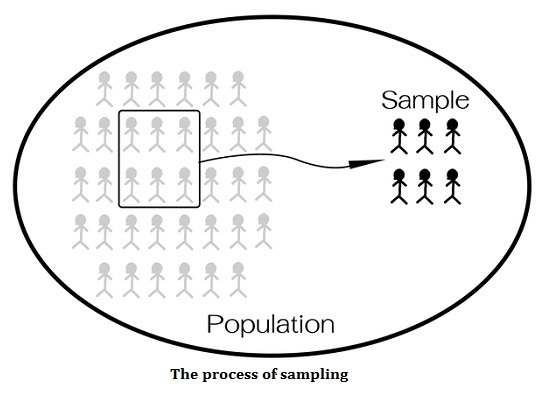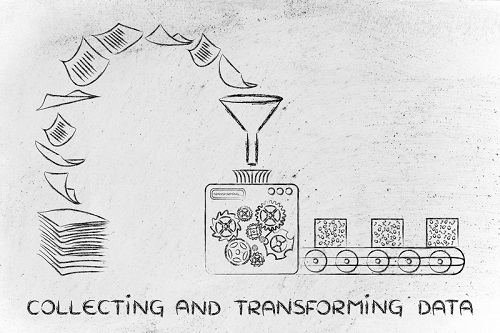

Samples are selected from a population in order to be studied. To ensure that the findings of the research can be generalised, the sample selected should be representative of the population. There are two main types of sampling −
The probability sampling process involves selecting individuals at random within a population, where each person has an equal chance of being chosen.
An equal chance is given to each member of the population when using simple random sampling. A random number generator is used to select a sample from the population and assign a unique number to each individual.
A systematic sampling technique involves selecting every kth individual from a population using probability sampling. By dividing the sample size by the population size, k is determined.
Sampling by stratifications is a technique of probability sampling in which samples are selected from subgroups or strata in a population. In situations where the population is heterogeneous and the researcher wishes to ensure that the sample is representative, this technique is used
The non-probability sample is selected using a non-random process, which may not represent the population as a whole. Non-probability sampling can be carried out in a variety of ways −

Researchers use convenience sampling to select participants who are readily available and willing to participate in a study. It is a method of nonprobability sampling. Researchers often use this technique when time and resources are limited and access to the population is difficult.
Researchers use snowball sampling to select individuals who can refer other individuals for the study. It is a non-probability sampling technique. Small populations are often reached with this technique.
Researchers select individuals according to specific criteria for purposeful sampling, a technique of non-probability sampling. A researcher often uses this technique when he or she wants to examine a group of similar individuals.
An individual or group of individuals is selected from the population/ cluster of people using cluster sampling.
Data is collected from individuals and groups using questionnaires and schedules. Schedules are more detailed versions of questionnaires, which include more questions and require more time to complete, whereas questionnaires are structured sets of questions used to gather information from a large number of people. Schedules are more detailed versions of questionnaires. Data can be collected using questionnaires or schedules. The tests can be administered online, by mail, by phone, or in person. Questionnaires are structured questions designed to collect information from many people at once. Depending on the objectives of the research, open-ended or closed-ended questions can be used −
Open-ended questions allow respondents to provide detailed and qualitative responses. Respondents are often asked this type of question when the researcher wants to learn more about their feelings, attitudes, and perceptions.
Closed-ended question is one in which there are several predetermined answers available to the respondent. Researchers often use this type of question to collect quantitative data for statistical analysis.
Questionnaires and schedules are created by following the steps below −
In order to begin a research project, it is necessary to define the research objectives and the information that will be needed.
Step two is to identify the target population, which is the group of individuals who will answer the questionnaire or schedule.
It is important to design clear, concise, and bias-free questions in the third step.
In the fourth step, a small sample of the target population is used to pilot test the questionnaire or schedule to identify any errors
It is then necessary to administer the questionnaire or schedule to the target population as the fifth step.
A statistical program is then used to analyse the results of the data entry and data analysis.
Statistical analysis is a technique used to analyse and interpret data collected from social research. It involves the use of mathematical and statistical tools to identify patterns, trends, and relationships in the data. There are different statistical techniques used in social research −

Data are summarised and described using descriptive statistics.
On the basis of a sample, inferential statistics are used to test hypotheses and draw conclusions about the population.
Two or more variables can be correlated using correlation analysis.
Two or more variables are analysed using regression analysis.
Using factor analysis, a set of variables can be identified based on their underlying influences.

An observation technique involves observing the participants' behaviour in their natural environment in order to collect data. It is a powerful research tool that can be used to collect data from people, animals, and the environment/natural setting. The researcher can use different techniques to record the data, such as taking notes, audio or video recording, or using a checklist, hidden cameras, monitoring social media, or analysing documents. Observations can be made through −
Direct observation involves the researcher observing the participants directly in their natural settings. This type of observation allows the researcher to gather data on the participants' behaviour, actions, and interactions with others.
Indirect observation involves the researcher collecting data on the participants without their knowledge. This approach is particularly useful when the researcher wants to study behaviour that cannot be observed directly, such as illegal or unethical behaviour.
Interview involves the collection of data by directly asking questions to the participants. Researchers can conduct them in person or over the phone. The interview approach is useful when the researcher needs to understand the participants' opinions, attitudes, and experiences. Some types of interviews are −
Structured interviews involve the researcher asking a set of standardised questions to the participants. The questions are pre-determined and are asked in the same order to all participants. They are particularly useful when the researcher needs to collect quantitative data that can be analysed statistically.
Using unstructured interviews, the researcher can ask open-ended questions, allowing the participants to provide a more detailed response. The researcher can follow up on the participants' responses, which can lead to more insightful data. They are particularly useful when the researcher needs to collect qualitative data, such as the participants' opinions and experiences.
Individuals, groups, or events are studied in depth in a case study. It can be used to understand social phenomena and is particularly useful when the researcher needs to collect detailed data on a specific topic and involves the researcher for collecting data from multiple sources such as interviews, observations, and documents. The researcher can use different techniques to analyse the data such as content analysis, discourse analysis, or thematic analysis. This allows the researcher to collect rich and detailed data that can be used to understand the social phenomenon being studied.
Once data has been collected, it must be analysed and interpreted to draw conclusions and answer the research question. The findings must then be communicated in a report that is clear, concise, and accessible to a wide audience. It is important to report the findings accurately and objectively. Thus, interpretation, data analysis, and report writing are essential components of social research as −
Interpretation involves analysing and interpreting the data collected from social research. It is a process of making sense of the data and identifying patterns and trends.
Data analysis involves organising and analysing the data collected from social research. It can be done using various techniques, such as coding, categorising, and summarising.
Report writing involves presenting the findings of the research in a clear and concise manner. It includes writing an introduction, methodology, results, discussion, and conclusion. The report should be written in a way that is easily understood by the intended audience.
Q1. What is the importance of sampling in social research?
Ans. Sampling is important in social research as it allows researchers to generalise their findings to the larger population. This makes the research more reliable and valid.
Q2. What is the difference between quantitative and qualitative data?
Ans. Quantitative data is numerical and can be analysed using statistical methods. Qualitative data is non-numerical and is analysed using techniques such as observation, interviews, and case studies.
Q3. What is the importance of data analysis in social research?
Ans. Data analysis is important in social research as it allows researchers to draw conclusions and answer the research question. It also allows researchers to identify patterns and relationships in the data.